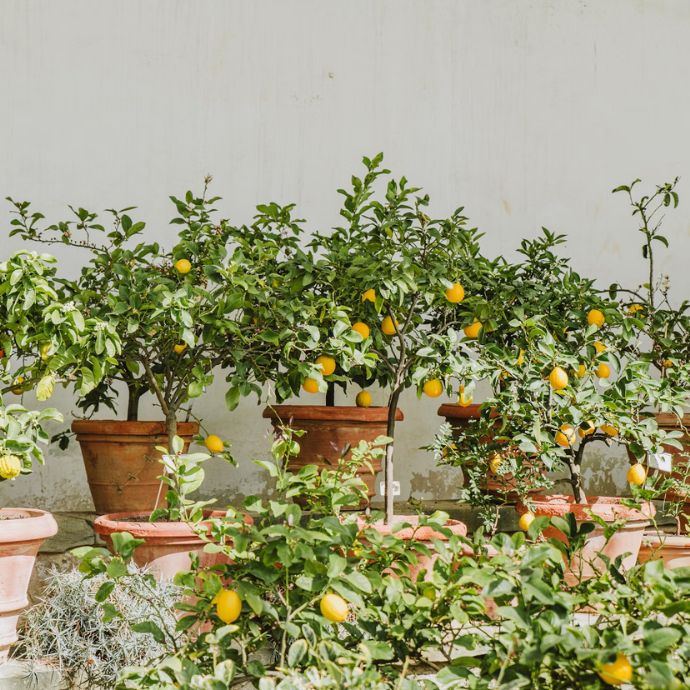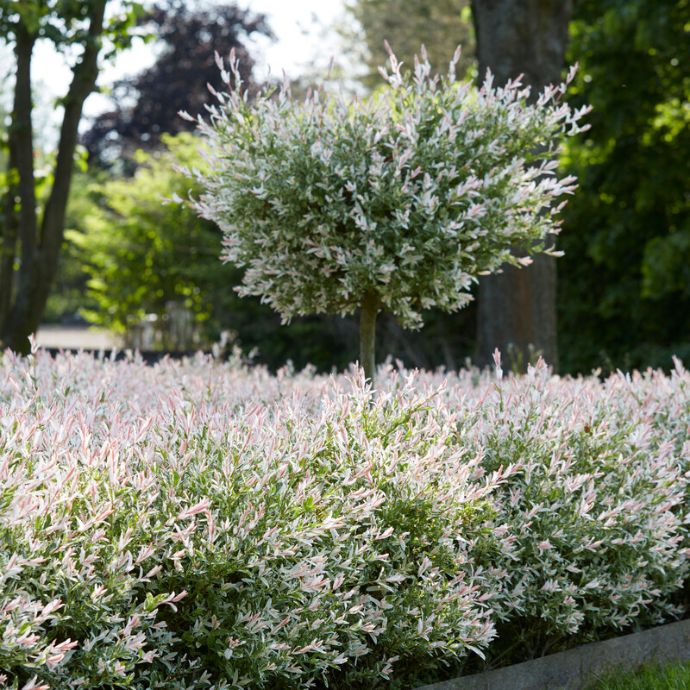Which Nut Tree Is Best for You?
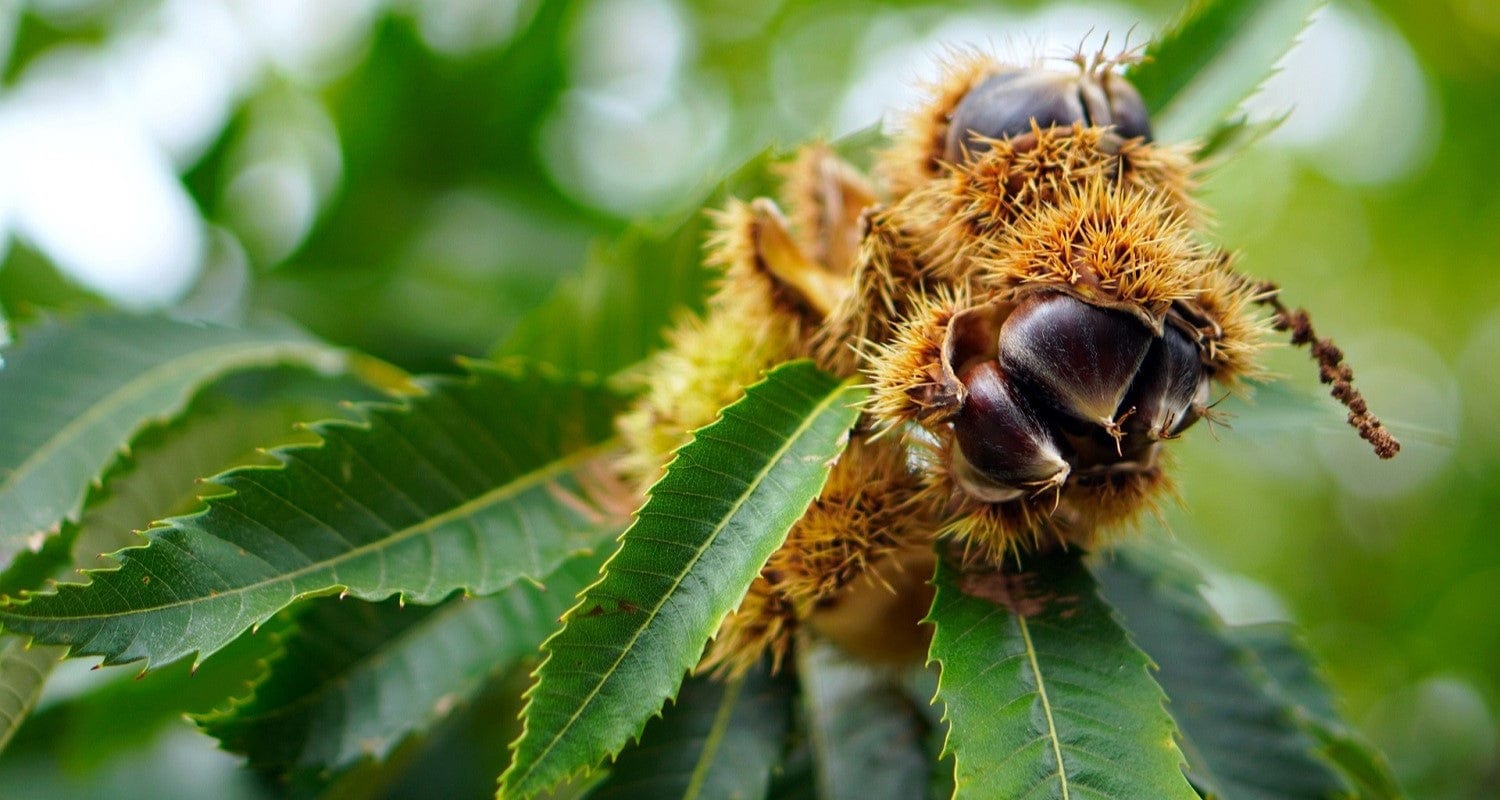
If you want to grow something a bit different from the usual apple or plum in your garden, a nut tree is a great choice. Like fruit trees, they’ll put on a wonderful blossom display in the spring, crop later in the year and attract birds, bees and butterflies to your garden.
Hazelnuts, cobnuts and filberts are native to the UK, having been grown for centuries for food; others, like walnuts and sweet chestnuts, are thought to have been introduced by the Romans. Nut trees are surprisingly easy to grow and will produce a delicious crop successfully in a garden - or even in some cases in a pot or as a hedge. Whichever you choose, the nuts will taste infinitely better than anything you can buy in a shop. We asked our growers which nut trees are the best for growing in the UK then got some advice on how to get the best from them.
Jump to:
1. Hazelnuts, Filbert and Cobnut trees - Corylus
Hazelnuts, Cobnuts and Filberts are all part of the same tree family and are the easiest nut trees to grow. They’re very hardy, compact trees which, unlike other nuts, will grow in sun or partial shade. The foliage is soft and downy on the underside and the tree is monoecious, meaning that male catkins and female flowers appear on the same tree. This makes them very attractive to pollinators! The nuts appear in clusters of one to four and are encased in a woody shell - harvest them in September.
Hazel trees need a pollination partner to produce nuts, so if there aren’t any in the neighbourhood, you should plant a pair that flowers at the same time.
There are many beautiful varieties to choose from - we love the colourful foliage of the award winning Purple Filbert Tree and the colour changing Rote Zellernuss, which even has pink catkins. Webb’s Prize Cobnut is renowned for its flavour and has an attractive weeping form, and you can even grow hazelnuts as a hedge!
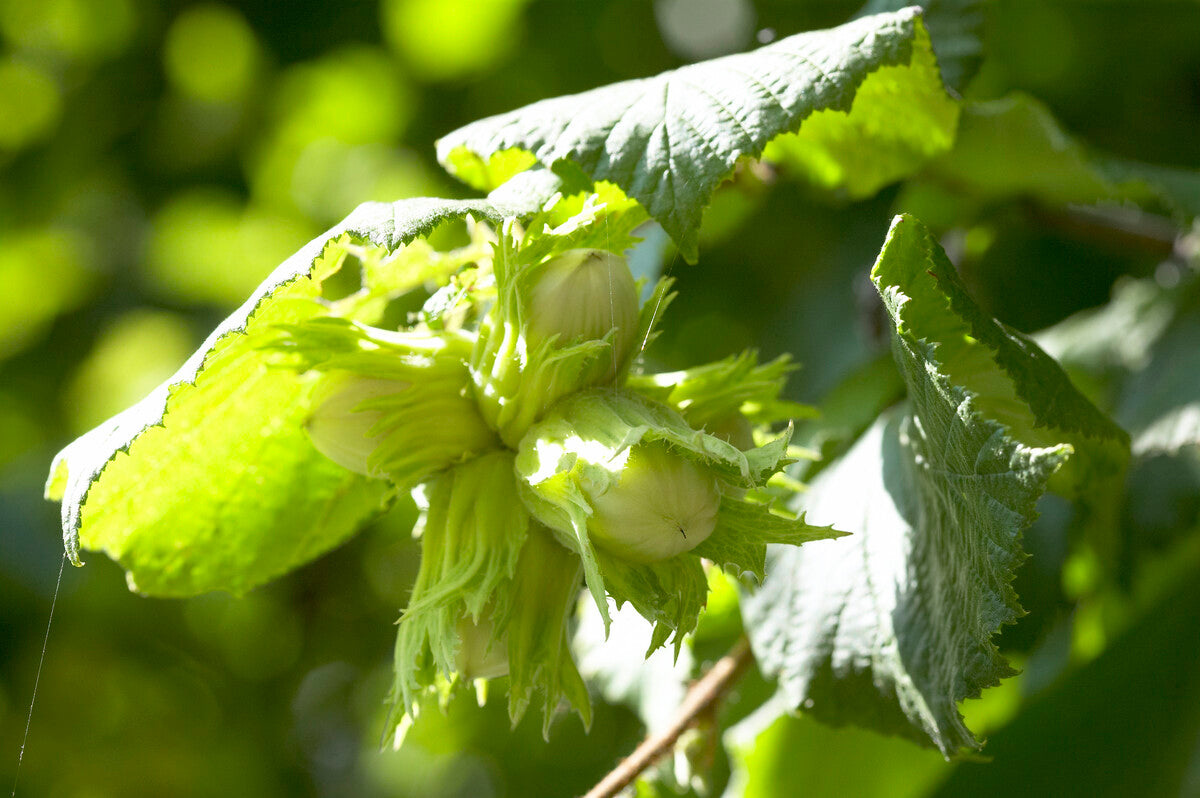
2. Walnut trees - Juglans regia
Brought to the UK by the Romans and a beloved feature of the landscape ever since, Walnuts are usually large trees that can grow up to 35m high - but if you have a smaller garden there are now dwarf varieties such as Europa which will reach a maximum height of 3.5m and produces a good crop. If you have the space, go for a traditional variety such as Juglans regia, an award winning favourite whose name means ‘royal nut of Jupiter’. They’re all self fertile, which means you’ll get a good crop from just one tree. Walnuts develop from female flowers, growing inside soft green husks. They can be harvested green for pickling or left until autumn for eating straight from the shell.
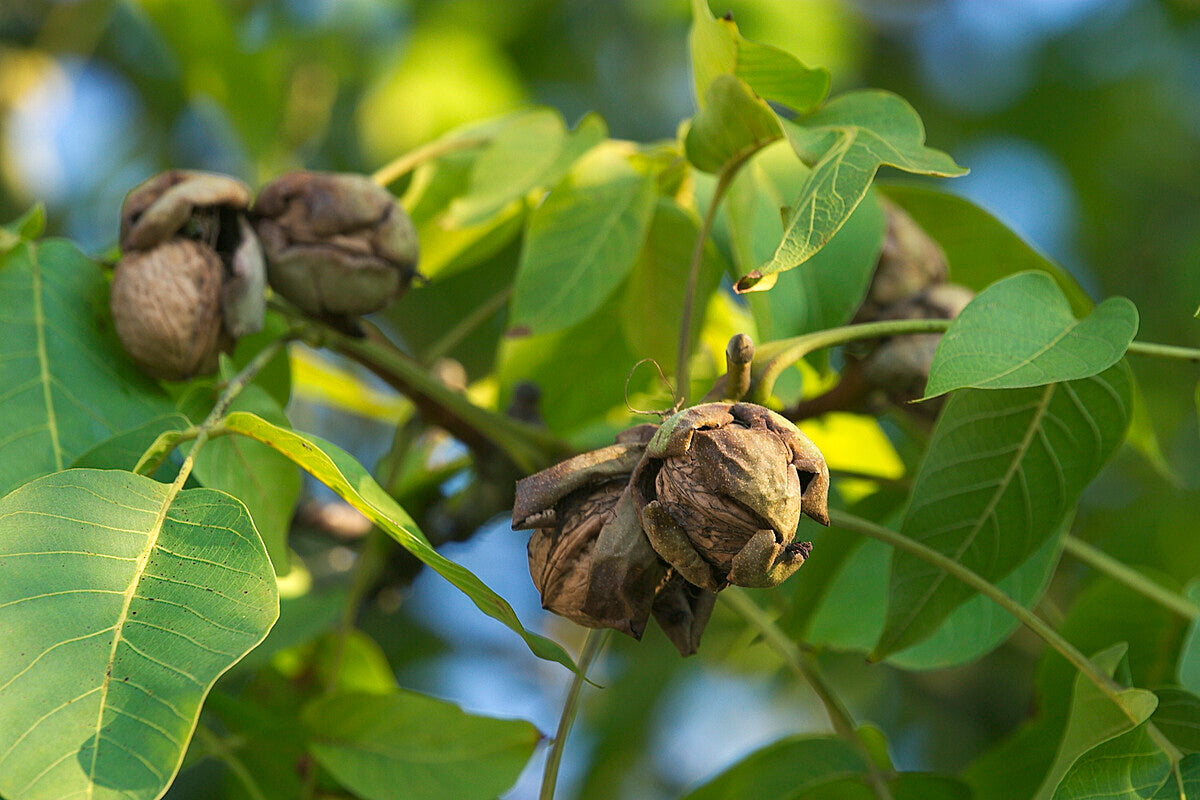
3. Sweet Chestnut trees - Castanea sativa
Classically beautiful Sweet Chestnut trees are another thing we have to thank the Romans for.
The nuts need no introduction - Christmas wouldn’t be the same without chestnuts roasting on an open fire, and they’re also delicious in a wide range of dishes from soups to sweets.
Chestnuts are one of the easiest nuts to harvest - you pretty much just wait for the spiky green cases to fall off, then remove the nuts from their fluffy lining - however they do take a long time (around 25 years) to reach maturity and start producing a crop. They grow to a height of 12m but can be pruned to fit smaller spaces or even grown as a hedge. Given that they can live to 700 years, these versatile trees are also a great investment!

4. Almond trees - Prunus dulcis
Even if almond trees didn’t produce nuts they’d be some of the most attractive trees you can grow (Van Gogh certainly thought so), with clouds of delicately scented pink blossom covering their branches every spring. The nuts are equally lovely, developing in soft shells to harvest in late September. They’re self fertile so you only need one tree to produce a good crop, but they do need a very sunny position with shelter from cold winds - a good place to grow them is against a south facing wall, or you can even grow them in a greenhouse or conservatory. You won’t need a lot of space - compact Princess grows to a maximum of 5m, Sultane to just 4m and both can be pruned smaller. You can eat your almonds straight from their shells or use them in baking.

How to get the best from your nut tree
Position
Plant your nut tree in a sheltered spot in the sunniest part of your garden - most nuts will need at least 6-8 hours of sunlight per day to ripen fully. The best type for nut production is a loamy, neutral soil which is well drained and won’t get waterlogged. Hazelnuts will tolerate a little shade and wet soil, so they may be your best bet if this sounds like your garden!
Pruning
You can skip this job and leave your nut tree to grow naturally if you prefer, but a little pruning each year can help to keep it healthier, better looking and more productive. Always prune between November and March when the tree is dormant (not growing).
Firstly, prune out any branches that are growing towards the middle of the tree instead of outwards - these won’t get enough sun to ripen the nuts and will crowd out the other branches. Then remove any branches that are dead, diseased or dying.
Finally, trim all but the main branches, cutting down to about six buds on each stem. Once your tree is fully established after 2-3 years, you can cut the main branches back by about a third each year, which will keep your tree to a manageable size.
Feeding
Nut trees don’t need any feeding - they get all the nutrients they need from the soil. If you usually dig in compost or manure when planting a tree, skip this step! Soil that is too rich can mean your nut tree produces too much leafy growth and not enough nuts.
Watering
Your new nut tree will need regular watering for the first eighteen months until its root system is properly established. After this time, it should only need watering in hot or dry weather.
Harvesting
There’s a slightly different method of harvesting for each type of nut.
Hazelnuts
Hazelnuts, filberts and cobnuts are ready when their husks (the tough outer shell) start to turn yellow. If some of the nuts are difficult to reach, you can knock the branches with a long stick. Pick them and store them in a dry airy space.
Walnuts
You can pick your walnuts when the green husks start to split in autumn - remove all of this husk and shell from a couple to check that the nut inside is fully formed, then go for it! You can pick the nuts while they’re unripe if you want to pickle them, or wait until they’re fully ripe and dry them in an oven on a low heat to store them.
Chestnuts
Chestnuts are usually ready to harvest between mid September and November, and they’re probably the easiest - do wear gloves though. Simply wait for them to fall off the tree and pick up all the nuts with open burrs (the spiky cases). Remove the nuts from the burrs, discard any damaged or holey ones, then store your chestnuts in an airtight container. They can also be kept in the fridge or frozen if you have a lot.
Almonds
Your almonds will be ready between August and September, when most of the shells have split open slightly. To collect your almonds, spread a sheet under the tree and knock the branches with a long pole until the nuts fall. To store the nuts, you can put them on covered trays outdoors in the sun or dry them in the oven. They’ll be ready to use when the kernels are brittle and can be broken by hand - store them in an airtight container.
Last updated: 20/11/2023


